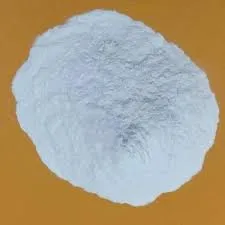
wrz . 24, 2024 18:55 Back to list
Understanding the Viscosity Properties of Hydroxyethyl Cellulose for Industrial Applications
The Role of Hydroxyethyl Cellulose Viscosity in Industrial Applications
Hydroxyethyl cellulose (HEC) is a non-ionic, water-soluble polymer derived from cellulose, widely utilized in various industrial and consumer applications due to its unique properties. One of the most significant characteristics of HEC is its viscosity, which plays a crucial role in determining its efficacy across different formulations, particularly in the fields of construction, personal care, pharmaceuticals, and food processing.
The Role of Hydroxyethyl Cellulose Viscosity in Industrial Applications
In the construction industry, HEC is often used in cement-based formulations. Its viscosity enables improved workability, ensuring that the mixtures are easy to handle and apply. Additionally, it helps retain water in mortars and plasters, which enhances adhesion and workability. The controlled viscosity of HEC helps to extend the open time of these materials, allowing for adjustments during application and improving the overall quality of construction projects.
hydroxyethyl cellulose viscosity

In the realm of personal care products, HEC serves as a thickener and emulsifier. In lotions, creams, and gels, it provides a smooth texture and stability, ensuring the even distribution of active ingredients. The viscosity of HEC can be fine-tuned to create formulations that are lightweight and easily absorbable or thicker and more luxurious, depending on the desired consumer experience. This versatility is vital in meeting diverse consumer preferences and maintaining product integrity over time.
Pharmaceutical formulations, too, benefit from the viscosity properties of HEC. It is often used in suspensions and gels to provide a controlled release of active pharmaceutical ingredients, enhancing bioavailability. The ability to modify viscosity allows formulators to tailor the release profile of drugs, making HEC indispensable in the development of effective therapeutic solutions.
In food processing, HEC acts as a texture modifier and stabilizer. It helps maintain the viscosity of sauces, dressings, and other liquid foods. Its ability to form a stable gel at low concentrations is particularly useful in creating products with desirable mouthfeel and consistency, contributing to an enhanced sensory experience for consumers.
In conclusion, the viscosity of hydroxyethyl cellulose is a pivotal factor in its functionality across numerous industries. Whether acting as a thickener, stabilizer, or emulsifier, HEC’s unique properties enable the formulation of a wide range of products with improved performance and consumer appeal. As industries continue to evolve, the demand for versatile and effective materials like HEC will likely grow, underscoring its importance in modern applications.
-
Versatile Hpmc Uses in Different Industries
NewsJun.19,2025
-
Redispersible Powder's Role in Enhancing Durability of Construction Products
NewsJun.19,2025
-
Hydroxyethyl Cellulose Applications Driving Green Industrial Processes
NewsJun.19,2025
-
Exploring Different Redispersible Polymer Powder
NewsJun.19,2025
-
Choosing the Right Mortar Bonding Agent
NewsJun.19,2025
-
Applications and Significance of China Hpmc in Modern Industries
NewsJun.19,2025







